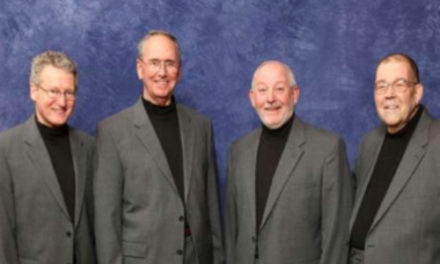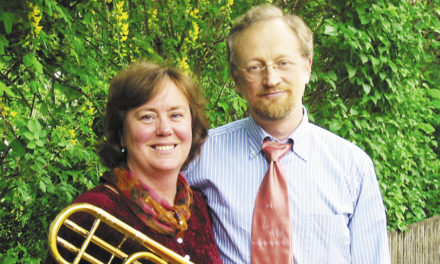November 2, 2019
By W. Gerald Cochran
Hickory – The Western Piedmont Symphony continued its 55th season with a concert of very unusual and delightful music at the Drendel Auditorium of the Catawba Valley Arts and Science Center. Joining the orchestra for this concert as first chair string players was La Catrina Quartet, which was the quartet-in-residence of the Western Piedmont Symphony from 2007 until 2009.
Opening the program was a work by Heinrich Franz Biber (1644-1704) called Battalia, for string orchestra and continuo. Although it was written in 1873, it sounds as if it could have been written in the 21st century. In eight sections, Biber composed a piece that wove the imagery of battle into the music. He used a number of unusual instrumental techniques to imitate cannon shots, snare drums, and a military fife. The second movement is the most bizarre, in that eight folk songs in seven different keys are woven together to produce a cacophony of dissonance, which he says represent “the drunks accustomed to bellow with different songs.” The group certainly achieved the desired effects of the music, which closes with a beautiful adagio of lament for the effects of war.
Following all of this was Pan og Syrinx, Op. 49 by the Danish composer Carl Nielsen (1865-1931). Written in 1918, this is a symphonic poem that depicts how the god Pan invented the pan flute while following the nymph, Syrinx. The piece has significant woodwind solos, as well as large parts for the percussion section. The performance was superb in all aspects.
“‘Twas brillig, and the slithy toves, did gyre and gimble in the wabe…” wrote Lewis Carrol in the poem “Jabberwocky” in Alice in Wonderland. Composer Anthony Di Lorenzo (born 1967) wrote this tone poem, also called “Jabberwocky,” describing Alice’s journey through the looking glass and her fixation on the poem. Multiple musical techniques are used to portray the various odd characters that she sees, such as the contrabassoon to depict the Jubjub bird. The deeper Alice goes into the forest, the more the music builds. She does, finally, find her way out again, triumphantly escaping the menacing foe, all reflected by the music. The music concludes with serious, haunting music, over which is read the poem itself. This is, indeed, a most unusual and entertaining piece of music, and it was performed expertly by the orchestra.
I must say that all three of the works presented in the first half of this concert required extraordinary skill and technique by the musicians and that they performed with great expertise and talent, rising to the high expectations of the composers of these pieces.
The program closed with possibly one the most famous works for violin and orchestra: Le quattro stagioni (The Four Seasons) by Antonio Vivaldi (1678-1741). This is actually a set of four violin concertos, one reminiscent of each season. Solo violinist for this concert was Lucia Kobza. Ms. Kobza has been a member of several orchestras, including the Greensboro Symphony and the Western Piedmont Symphony. She holds Bachelor’s and Master’s degrees from Hochschule der Künste Bern, Switzerland and is currently a doctoral candidate at Stony Brook University in New York. She has also recently joined the Friction Quartet in San Francisco as their violist. She gave an energetic and virtuosic performance, with great expression and nimble articulation. The birds and the winds and the storm and the rains were all expertly played by both soloist and ensemble for a very satisfying performance.
Do stay tuned for the next concert, “A New Americana,” to be given on February 1, 2020.










